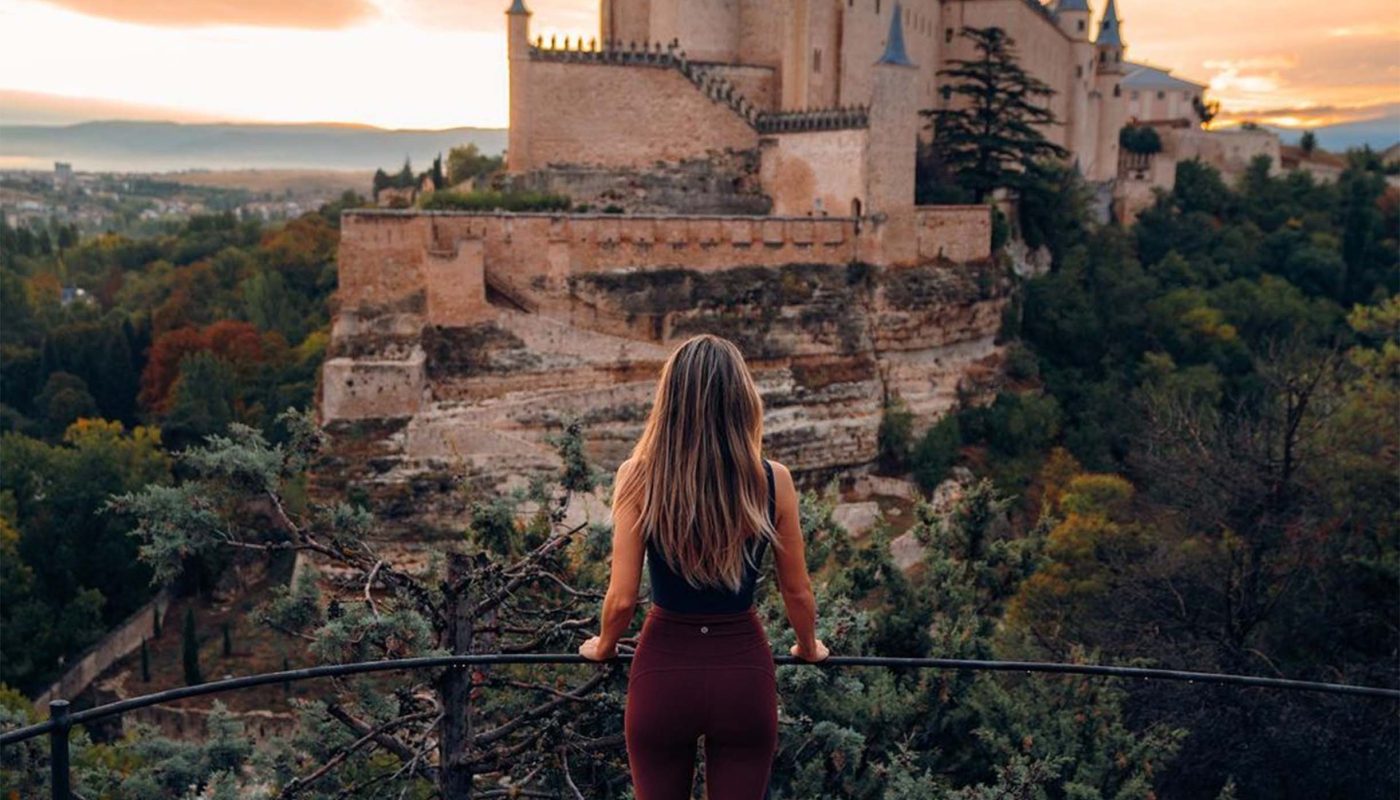As my plane touched down in Spain, the palpable excitement of finally setting foot on the historic grounds of Alcázar de Segovia surged through my veins. The stories I had read, the images I had seen – they all paled in comparison to the anticipation of witnessing this UNESCO World Heritage site with my own eyes. My journey was not just about exploring a castle; it was about immersing myself in the rich tapestry of Spanish history, a history that Alcázar held within its formidable walls.
Stepping into the Past
The anticipation grew palpable as I approached the entrance of Alcázar de Segovia. The towering facade, adorned with intricate details, commanded attention and stirred a sense of wonder. The sheer magnitude of the castle’s presence became more apparent with each step, leaving me in awe. Standing at the threshold, I couldn’t help but feel a profound connection to the centuries that had passed within these stone walls.
As I crossed the threshold into Alcázar’s inner sanctum, it was akin to stepping through a portal into a bygone era. The echoes of history whispered through the corridors, inviting me to explore the various chambers and halls that bore witness to centuries of stories. The Throne Room, a regal masterpiece, transported me back to an era of grand ceremonies and pivotal royal decisions. Every inch of the room exuded opulence, from the intricately designed thrones to the majestic tapestries that adorned the walls.
The symbolism embedded in the castle’s ornaments and tapestries became a living testament to the complex narratives of power, politics, and the dynamic ebb and flow of Spain’s dynastic fortunes. It was more than a visual feast; it was a tangible connection to the intricate tapestry of Spain’s history. In those moments, I transcended the role of a mere tourist; I became a time traveler, unraveling the layers of Alcázar’s storied past with every exploration. Each ornament told a story, and each tapestry wove a narrative that captivated my imagination.
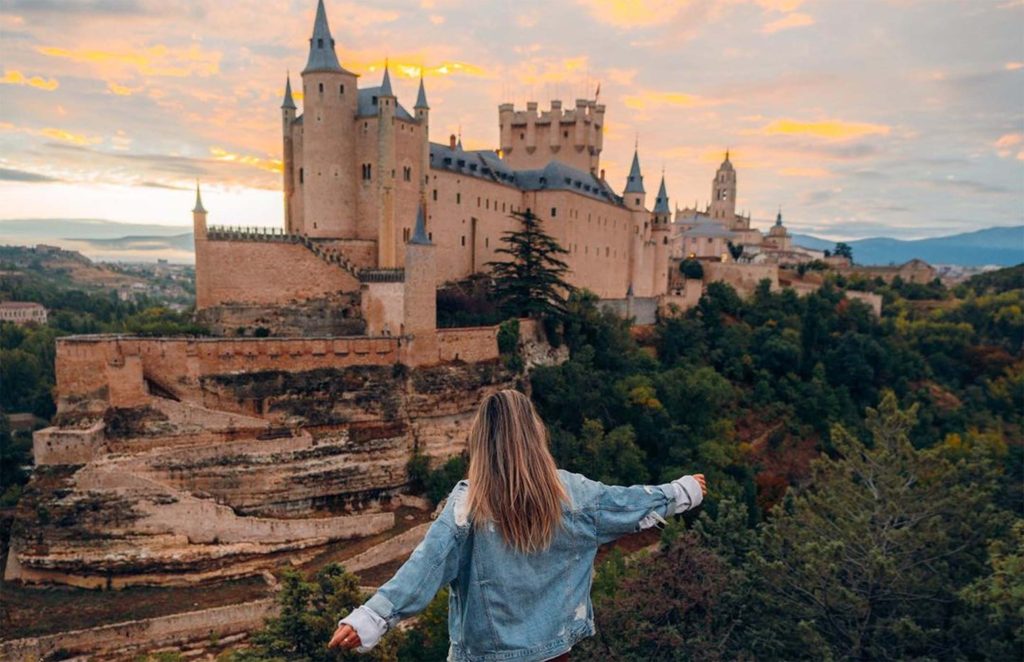
The corridors became a portal through which I could almost hear the whispers of kings and queens, envisioning the grandeur of banquets and the weight of royal decisions. Alcázar de Segovia had the magical ability to transform a historical site into a living, breathing entity that invited visitors to immerse themselves in the richness of its past. In the Throne Room, I found myself not just observing history but actively participating in its unfolding chapters.
The regal splendor of the Throne Room was a testament to the artistry and craftsmanship of the era, where every detail served a purpose in conveying the grandeur and authority of the monarchy. As I stood amidst the opulence, I couldn’t escape the feeling that I was a spectator in a play where history took center stage. It was more than a visual spectacle; it was a multisensory experience that transported me to a time of majesty and influence.
In those moments of exploration, Alcázar de Segovia ceased to be a static monument; it became a dynamic vessel through which I traversed the annals of Spanish history. The symbolism, the regalia, and the very stones beneath my feet became conduits to understanding the nuances of power and the enduring legacy of a kingdom. As I left the Throne Room, the echoes of history lingered, and I eagerly ventured deeper into the heart of Alcázar, ready to unravel more of its captivating past.
Climbing the Tower of John II
The decision to ascend the Tower of John II felt like embarking on a journey within a journey, a vertical odyssey that promised not just elevated views but a deeper connection to the essence of Segovia. The spiraling staircase, worn by the footsteps of history, guided me higher, each step echoing with the anticipation of the panoramic spectacle awaiting me.
As I ascended, both physically and metaphorically, the unfolding views became a visual narrative of Segovia’s story. The city sprawled beneath like a living tapestry, where the red-tiled roofs, the intricate patterns of the Gothic cathedral, and the surrounding landscapes seamlessly blended the past with the present. The Tower of John II became a window through which I could witness the layers of history etched into the cityscape.
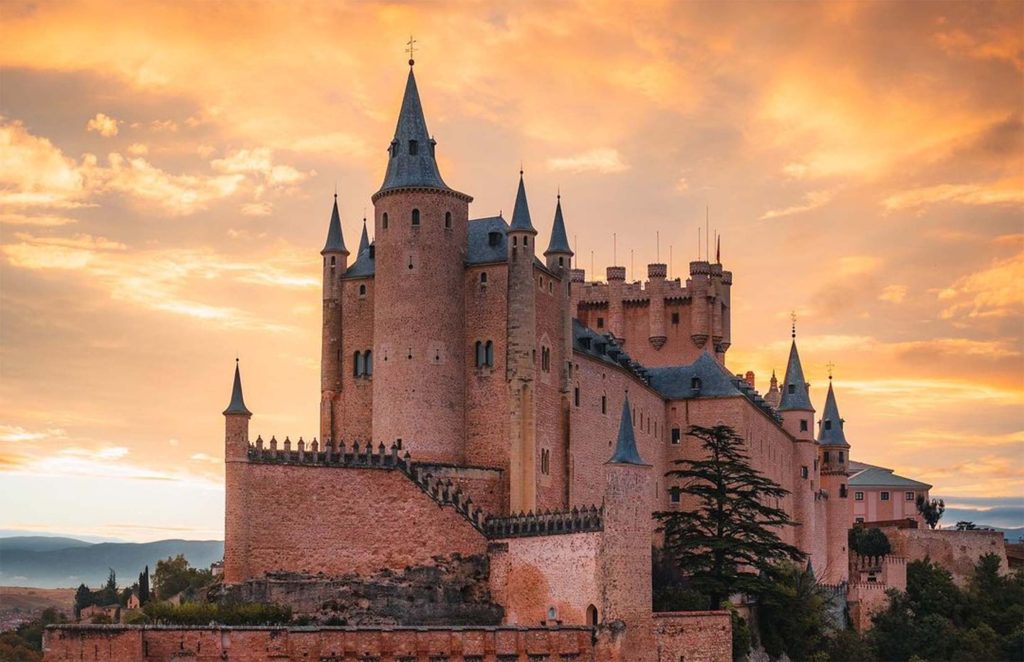
Reaching the summit was not just a physical elevation; it was a transcendence into a realm where time seemed to converge. The wind carried whispers of tales from centuries past—of knights who once traversed the city’s streets, of kings who held court within Alcázar’s walls, and of the conquests that shaped the destiny of Segovia. From the tower’s vantage point, I didn’t merely observe the city; I became a part of its collective memory.
The panoramic views were a symphony of contrasts, where medieval architecture stood in harmony with a modern urban backdrop. The red hues of the tiled roofs, the ageless stones of Alcázar, and the Gothic spires of the cathedral painted a picture that transcended the constraints of time. Segovia revealed itself as a city where every corner whispered tales of its rich and varied history.
As I stood at the summit, gazing across the expanse of Segovia, I felt a profound connection to the heartbeat of the city. The Tower of John II was not just a lookout point; it was a portal through which I could peer into the soul of Segovia. The resilience of the city, evident in the preservation of its medieval heritage amidst the encroaching modernity, was a testament to its commitment to authenticity.
Descending from the tower, I carried with me not just the breathtaking views but a sense of having touched the spirit of Segovia. The Tower of John II became a metaphor for the city itself—standing tall, unwavering, and eternally connected to the tales of its past. Each step of the descent felt like a step back in time, leaving me with an indelible impression of Segovia’s enduring charm.
The Gardens of Alcázar
Beyond the towering stone walls and regal chambers, a hidden gem awaited within the heart of Alcázar – the enchanting gardens. Stepping into this verdant sanctuary felt like crossing a threshold into a realm where time slowed, and the weight of history gave way to the embrace of nature’s tranquility. For a traveler like me, eager to balance cultural immersion with moments of serenity, the gardens of Alcázar proved to be a haven of beauty and repose.
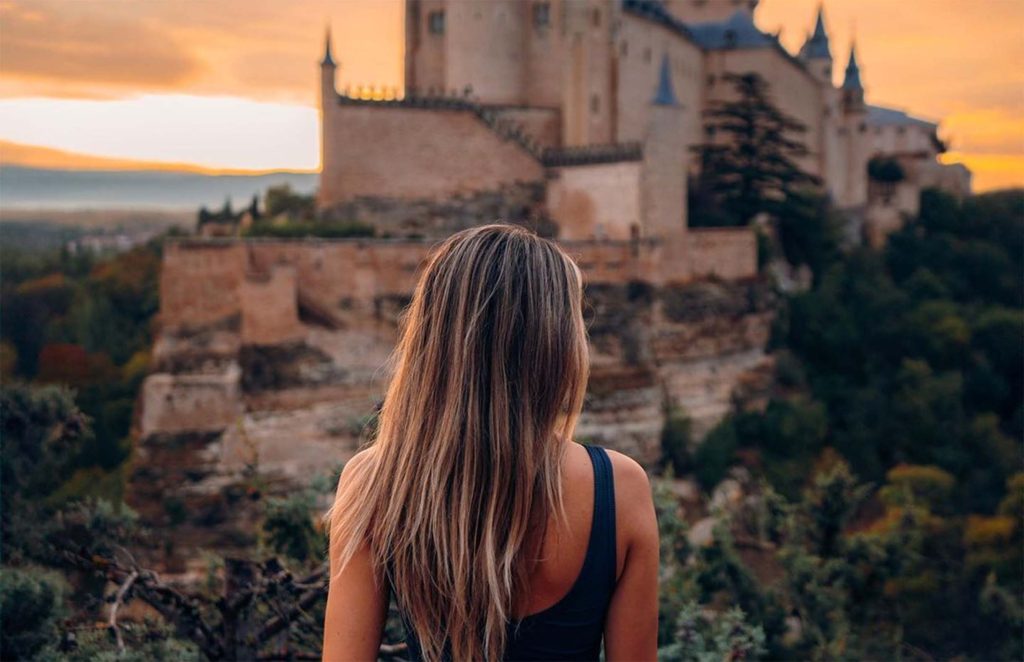
The gardens, a testament to thoughtful design, unfolded in a series of terraces, each revealing a new facet of their charm. As I meandered through the meticulously manicured lawns, the symphony of nature enveloped me – the gentle rustle of leaves, the murmur of fountains, and the occasional melody of birdsong. It was a stark departure from the imposing interiors of the castle, a vibrant expanse where the lines between artistry and nature blurred seamlessly.
The careful arrangement of flora, interspersed with strategically placed fountains and sculptures, created a harmonious marriage of horticultural prowess and artistic sensibility. The vibrant hues of blossoming flowers added splashes of color to the lush green canvas, creating a visual feast that captivated the senses. Each step revealed a new tableau, a living tapestry that spoke of the gardeners’ dedication to preserving this oasis within Alcázar’s historic confines.
Navigating the network of pathways, I discovered secluded alcoves and shaded corners that invited introspection. It was in these tranquil pockets that I could pause, reflect, and appreciate the ephemeral beauty that surrounded me. The gardens became more than just an extension of Alcázar’s grandeur; they were a living testament to the enduring power of nature to evoke peace and wonder.
The juxtaposition of the grand castle against the intimate charm of the gardens highlighted the multifaceted allure of Alcázar. It wasn’t just a fortress of stone and history; it was a living entity, a place where the rigidity of walls softened into the organic shapes of leaves and petals. In the gardens, I found a delicate balance between the imposing narrative of the past and the timeless embrace of nature.
Leaving the gardens behind, I carried with me a sense of tranquility, a visual palette of colors, and the lingering melodies of birdsong. The gardens of Alcázar had offered not just a scenic interlude but a profound reminder – that amidst the echoes of history, the simplicity of nature could still weave its magic, creating moments of serenity that lingered in the traveler’s heart.
Navigating Practicalities
To fully savor the experience, practical considerations played a crucial role. The admission process was smooth, and the affordability of the entrance fee (around €10 for general admission) made Alcázar accessible to a diverse range of visitors. The castle’s opening hours, from 10:00 AM to 6:00 PM, provided ample time for exploration. However, it’s advisable to check the official website for any updates or alterations in the schedule.
A Personal Reflection
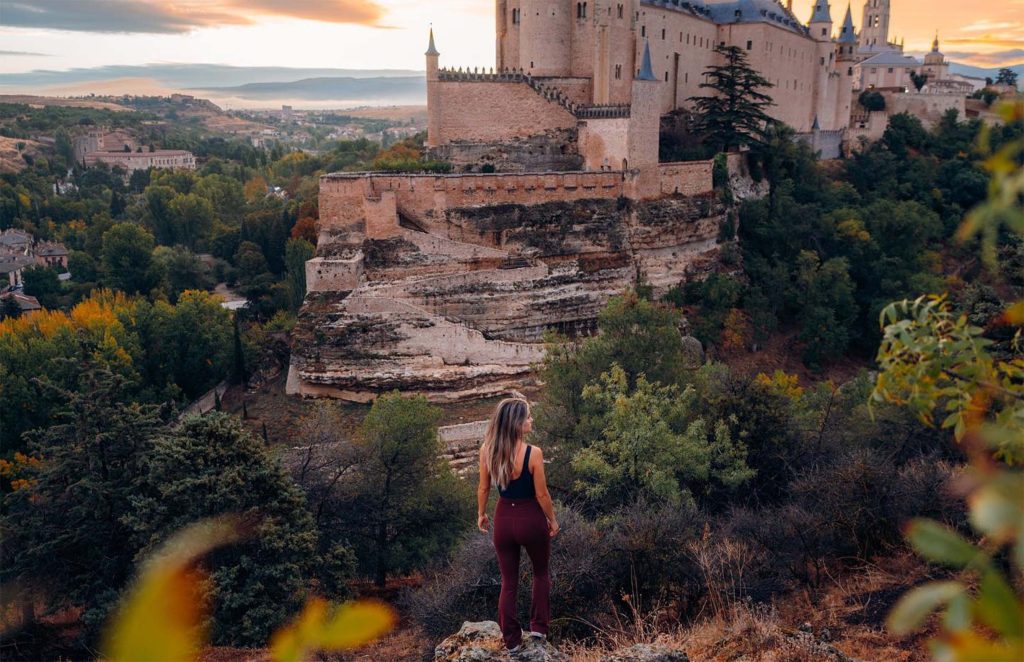
As the day unfolded, I found myself reflecting on the profound impact of Alcázar de Segovia. It wasn’t just a tourist attraction; it was a living testament to the resilience of Spain’s cultural identity. The intricate details, the soaring towers, and the panoramic vistas spoke of a history shaped by conquests, reconquests, and the ever-evolving tapestry of human civilization.
Every step within Alcázar’s confines felt like a communion with the spirits of the past. The castle became more than a structure; it became a vessel through which I traveled back and forth in time. The personal narratives embedded in its stones resonated with the universal human quest for power, legacy, and a sense of belonging.
Parting Thoughts
As the day drew to a close, I reluctantly bid farewell to Alcázar de Segovia. Yet, the memories forged within its walls lingered, vivid and enduring. The castle’s timeless legacy became a part of my own narrative, a story I would carry with me as I continued my journey through the landscapes of history.
In parting, I marveled at the symbiotic relationship between the past and the present. Alcázar de Segovia wasn’t frozen in time; it was a living entity, bridging the temporal gap and inviting each visitor to become a custodian of its tales. My odyssey through Alcázar had been transformative, an exploration not just of a castle but of the shared human experience that transcends epochs and borders.
Epilogue: Alcázar’s Invitation
In the end, Alcázar de Segovia extended an open invitation to all who sought to unravel its secrets and witness the dance of history. For those with a penchant for time travel through architectural wonders, Alcázar stood as an immutable beacon, beckoning travelers from across the globe to walk its corridors, climb its towers, and, in doing so, become a part of its ongoing narrative.
